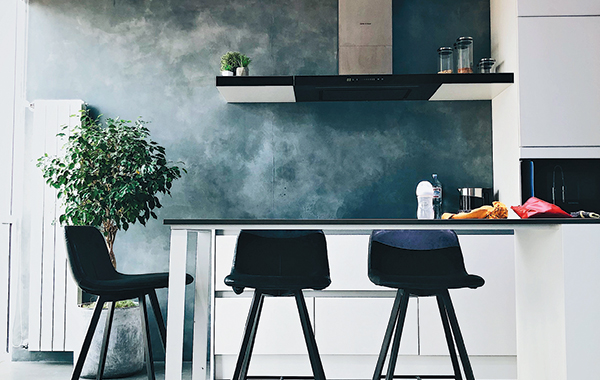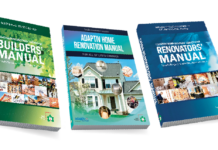By Dina McNeil,
Program Director, Renovation Services, CHBA
Two tax credits from the federal government aimed at accessible home renovations are providing opportunities for renovators and their clients, and CHBA advocacy has played a big role in those coming to fruition.
Starting this year, the federal government is increasing the ceiling on eligible expenses for the Home Accessibility Tax Credit from $10,000 to $20,000. This will provide additional tax support for homeowners looking to improve their home’s accessibility and improve independent living. The credit is for qualifying individuals (for example, someone who claims the Disability Tax Credit) or individuals who are at least 65 years old. CHBA was largely responsible for this tax credit’s origination a few years ago, working closely with the Minister of Revenue at the time. CHBA’s CEO Kevin Lee, who engaged extensively with the Minister to see the credit come about noted, “We are very pleased to see this credit now expanding to further assist those wanting to age in place – this will be a bigger and important part of our approach to housing and health care in the future.”
Opportunities for renovators
Pat Acquisto, chair of CHBA’s Adaptiv Home Council and owner of Pro Accessibility Ltd. in Toronto, predicts that the tax credit is going to create a lot of opportunities for renovators and homeowners. “With the higher tax credit, a homeowner who couldn’t previously afford to renovate for accessibility could potentially be in a position to make it happen.”
Acquisto’s company specializes in building, designing and renovating environments for inclusivity and accessibility. They’re seeing a growing need for home modifications. “Statistics show that a large cohort of Canadians are currently aging gracefully, and as that happens, there are more people who want to age in their homes. With that, the demand for accessible home modifications is on the rise,” he says.
The 2022 federal budget also included the introduction of a new Multigenerational Home Renovation Tax Credit. Supporting secondary suites has been a focus of CHBA advocacy as an important means to increase housing supply, so this too was a welcome announcement in the budget. A qualifying renovation would be one that creates a secondary dwelling unit to permit an eligible person (a senior or a person with a disability) to live with a family member. Starting in 2023, this will allow families to recover 15 per cent of eligible expenses up to $50,000 for the creation of a secondary dwelling unit.
Adaptiv Home Renovation Course
“A lot of our clients are looking to move parents in with them, and people want their own living quarters. That could be modifying a basement or building a small extension,” says Acquisto. “As of now, we’ve seen some interest and I think with the funding that will grow.”
Renovators and other professionals who are interested in getting into the space should consider CHBA’s Adaptiv Home Renovation Course, which has special pricing for CHBA members. The course is aimed at renovators, designers, as well as health professionals who want to learn more about the aging in place market and the growing business opportunities across the country. Learning is focused on improving design with safety, security, ease of use, comfort, accessibility and occupant health, and includes a building knowledge component.
When done correctly with the homeowners in mind, home modifications can significantly improve quality of life. Federal tax credits are aiming to make that possible for more Canadians, and CHBA is working to give members the training and network needed to specialize in this field. For those who are interested, it can be very rewarding. “This type of work is for people who want to make a difference, who love helping people, and who love construction,” says Acquisto.
For more information on the CHBA Adaptiv Home Renovation Course, visit chba.ca/adaptivhome.












